Abrasives in Aeronautics
Precision, reliability and safety in every application
In the aerospace industry, every detail matters. The reliability of an aircraft depends as much on high-level engineering as on the manufacturing processes that ensure the precision of each component. Within this process, abrasives play an essential, though often invisible, role. Whether in the manufacturing of structural parts, the finishing of critical surfaces, or the maintenance of highly demanding technical elements, abrasives in aeronautics are a key tool for meeting the quality, safety, and performance standards required by the sector.
The choice of a suitable abrasive is not trivial. It must be compatible with complex materials such as titanium or Inconel, ensure minimal heat generation to avoid deformations or residual stresses, and deliver controlled finishes with very strict tolerances. In addition, in a regulated environment such as aerospace, only consumables that comply with international standards such as EN12413, ISO, or OSA-type certifications are considered.
Throughout this article, we will analyze the main applications of abrasives in aeronautics, the technical requirements they must meet, and the fundamental criteria for their proper selection.
Key applications of abrasives in aeronautics
Abrasives play a fundamental role in multiple phases of aerospace manufacturing and maintenance. It is not just about grinding or polishing, but about achieving precise finishes on components where the slightest deviation could compromise structural or aerodynamic performance.
One of the most common uses is the cutting of metal sheets and structural profiles, especially in titanium alloys, aerospace aluminum, or hardened stainless steels. In these cases, abrasive cutting discs allow clean and fast cuts, reducing thermal deformation thanks to temperature-controlled formulations.
During the assembly phase, abrasives are used to create recesses, level surfaces, and prepare welded or riveted joints. In particular, grinding discs and flap discs ensure precise material removal without affecting the geometry of the part.
They also play a relevant role in surface finishing, especially when it is necessary to smooth roughness or remove marks after machining or welding processes. Here, abrasive brushes or fiber discs make it possible to achieve a specific surface texture, which is essential for subsequent treatments such as anodizing or anti-corrosive coatings.
Finally, in aircraft maintenance tasks, abrasives are necessary for visual inspection, cleaning of critical areas, or reconditioning of metal surfaces, without compromising the integrity of the component.
Requirements that abrasives must meet in the aerospace industry
In the aerospace industry, the use of abrasives is not only a matter of efficiency or productivity: it is directly linked to safety, precision, and regulatory compliance. Therefore, the products used must meet a series of extremely demanding technical and quality requirements.
High consistency in performance
Each cutting, grinding, or finishing operation must deliver homogeneous results, regardless of the abrasive’s manufacturing batch. Consistency in performance ensures that the margin of error is practically zero, which is essential when working with tight tolerances on critical parts such as structural components, landing gear, or engine parts.
Compatibility with special materials
In aerospace manufacturing, the materials used are not conventional. Titanium alloys, Inconel, high-strength aluminum, and advanced composites require abrasives capable of working without causing overheating, contamination, or surface damage. For example, an unsuitable abrasive can generate microcracks in a titanium part, which would compromise its long-term integrity.
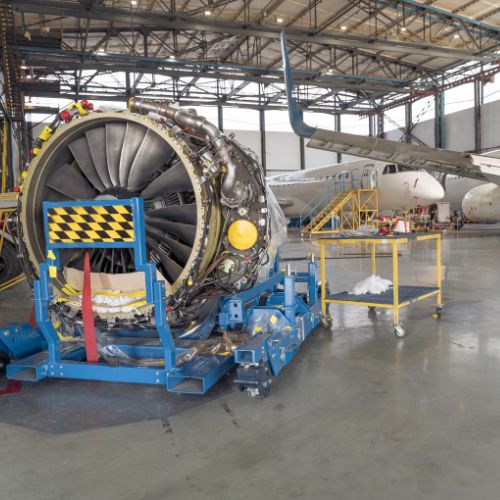
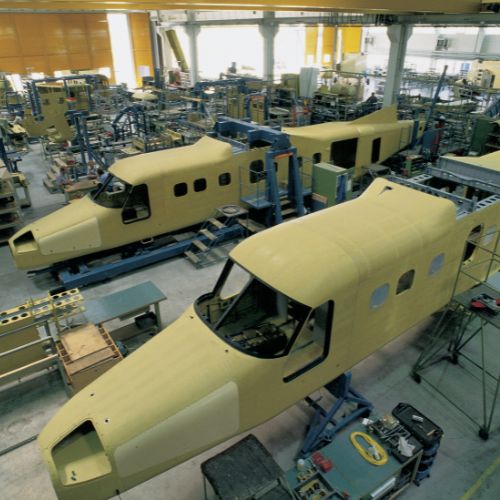
Low heat generation and absence of contaminants
Thermal management is another critical aspect. Excessive friction can alter the mechanical properties of the material being worked. Therefore, abrasives used in aeronautics must be designed with technologies that reduce heat buildup, prevent oxidation, and minimize burr formation. In addition, they must be free of contaminants such as iron, chlorine, or sulfur, which could induce corrosion in special alloys.
Compliance with regulations and certifications
The abrasives used must comply with international standards such as EN 12413 (safety in bonded abrasive wheels), ISO 11148, and specific aerospace sector certifications that guarantee traceability, safety, and process quality. In some cases, manufacturers must have approvals from aerospace clients or comply with NADCAP (National Aerospace and Defense Contractors Accreditation Program) standards, especially in surface finishing processes.
Requirements that abrasives must meet in the aerospace industry
In the highly regulated and demanding aerospace industry, abrasives cannot be simple standard consumables. They must meet very specific criteria that guarantee safety, precision, and compatibility with advanced materials. Below, we detail the main technical requirements that any abrasive intended for this industry must meet:
High consistency in performance
In the manufacturing of aerospace components, each part must meet extremely tight tolerances. Therefore, abrasives must provide predictable and uniform behavior throughout their entire service life. Any variation in aggressiveness, wear, or finish can compromise the quality process.
The stability of the abrasive grain, the homogeneity of the backing, and the repeatability of results are essential qualities in this sector, where there is no room for improvisation.
Compatibility with special materials
The aerospace sector uses a wide range of difficult-to-machine materials, such as Inconel, titanium alloys, epoxy matrix composites, or tempered aerospace aluminum. The selected abrasives must be capable of working these materials without contaminating them, without causing internal stresses, and without losing effectiveness.
For example, ceramic or zirconia abrasives are usually more effective with these materials, while the use of specific binders reduces heat generation and the risk of grain overload.
Low heat generation and absence of contaminants
The buildup of heat during cutting or grinding can alter the microstructure of the treated materials, compromising their mechanical performance or fatigue resistance. That is why abrasives for aerospace use must operate with minimal friction and rapid heat dissipation.
In addition, the absence of ferrous contaminants or corrosive substances in the formulation of the abrasive is critical to prevent the appearance of oxides or the degradation of critical surfaces.
Regulatory compliance
Every abrasive used in aerospace industrial environments must comply with safety and quality standards such as EN12413 for abrasive wheels or ISO 9001 in manufacturing processes. In addition, many manufacturers must pass audits and obtain additional certifications specific to aerospace programs or defense organizations, such as NADCAP or AS9100.
Processes in which abrasives are used in aircraft manufacturing
The manufacturing of aerospace components involves an extensive chain of processes where abrasives play an essential role. Far from being a secondary operation, sanding, cutting, grinding, or polishing are critical stages that directly affect the performance, safety, and aerodynamics of each part.
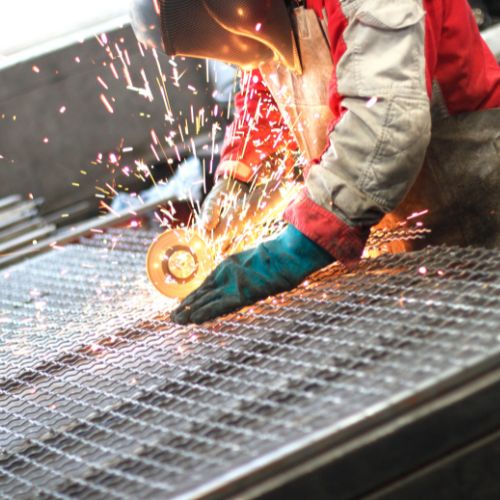
Cutting of structural aircraft materials
During the initial manufacturing stage, abrasives are involved in cutting aluminum sheets, titanium parts, or special alloys such as Inconel. In these phases, thin precision cutting discs with ceramic or zirconia grain are used, allowing clean, burr-free cuts with minimal heat generation, thus avoiding microstructural alterations.
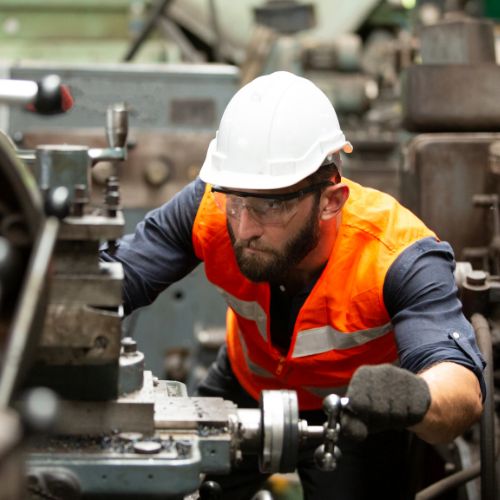
Grinding of weld seams
In welded structures, especially in fairings, joints, or internal supports, it is necessary to remove weld seams to achieve aerodynamic surfaces or to prepare areas for subsequent treatments. Reinforced grinding discs or flap discs are used here for a finer finish, ensuring stability and precision without compromising the material thickness.
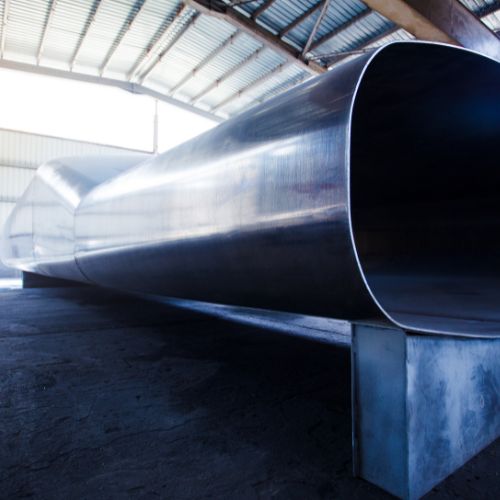
Surface preparation and cleaning
Before applying coatings, paints, or heat treatments, uniform surface preparation is essential. Abrasive brushes or compressed fiber discs allow the removal of oxides, residues, and contaminants without damaging the substrate, which is vital to ensure proper adhesion and performance of protective coatings.

Surface finishing and final polishing of aircraft
In the final stages, abrasives are used to improve surface roughness, removing marks, imperfections, or machining lines. The goal is to optimize aerodynamics and prevent stress concentration points that could lead to structural failures. Everything from fine abrasives to non-woven materials is used to achieve uniform and controlled finishes.
Importance of traceability and consistent quality in the aerospace sector
In the aerospace industry, where every gram matters and every millimeter can make a critical difference, quality standards are extremely strict. This applies not only to the design and assembly of aircraft but also to the technical consumables used in their manufacturing, such as abrasives.
Absolute performance control
Each abrasive used must deliver absolute consistency in its performance. The slightest variation in cutting aggressiveness, grain size, or thermal resistance can alter a part’s surface finish, compromising its mechanical behavior or its ability to withstand fatigue. For this reason, abrasive manufacturers working with the aerospace sector must ensure stable production processes with meticulous and repeatable quality controls.
Complete batch traceability
Abrasive products used in aeronautics must have complete traceability from their origin. This means being able to identify the manufacturing batch, the date, the quality controls passed, and even the raw materials used. This traceability allows auditing and certifying that each cutting disc, brush, or abrasive has met the requirements demanded by the aircraft manufacturer or the maintenance provider (MRO).
Essential standards and certifications
To meet these requirements, abrasives must be manufactured in accordance with international standards such as EN12413 (for bonded abrasive products), ISO 9001 (quality management system), or specific requirements defined by aerospace organizations (e.g., AS9100, when applicable). Technical documentation, safety data sheets, and test reports are inseparable parts of the product.
In this context, suppliers that serve the aerospace industry do not only provide abrasive materials: they provide trust, reliability, and regulatory compliance in every supply.
Current challenges and trends in the use of abrasives for aeronautics
The aerospace industry is rapidly moving toward lighter, stronger, and more efficient materials, which has considerably raised the technical requirements for machining, polishing, and finishing processes. This paradigm shift also directly affects the use of abrasives.
New materials, new challenges
Today, many aerospace components are manufactured from titanium alloys, Inconel, high-strength aluminum, and composites such as CFRP (carbon fiber reinforced polymer). These materials, while offering mechanical and weight advantages, present significant machining challenges. In particular:
- Inconel generates a lot of heat through friction, which requires the use of abrasives with high thermal resistance.
- Composites require machining without contaminating the fibers or causing delaminations.
- Titanium is abrasive to the tools themselves, which requires durable products with controlled wear.

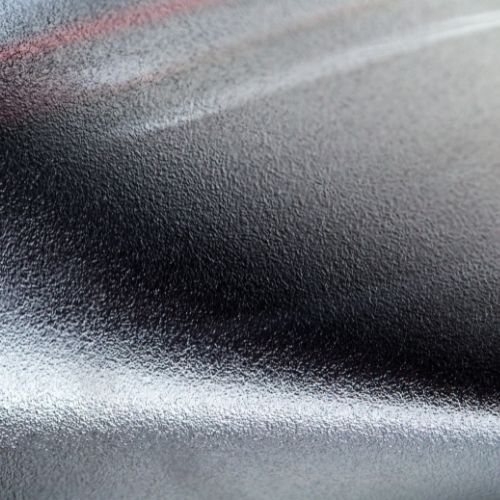
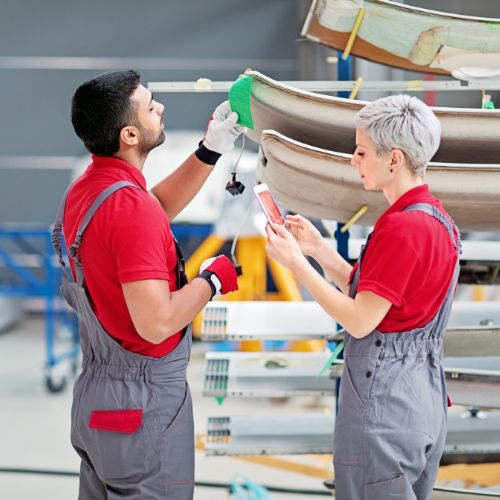

Trend toward cleaner and more sustainable processes
Aerospace manufacturers are increasingly committed to reducing emissions and waste. This also impacts the abrasives used, where the following are valued:
- Products free of contaminants such as sulfur or chlorine, which could damage the integrity of certain metals.
- Reusable or recyclable discs or brushes, especially in high-volume operations.
- Abrasives that allow dry processes or minimal lubrication, reducing dependence on coolants.
Digitalization and traceability in the use of consumables
In smart production environments (Industry 4.0), abrasive tools are integrated into the digital production flow. This implies:
- Batches identifiable by QR or RFID codes.
- Real-time monitoring of abrasive wear.
- Recording of usage history on each critical part as part of quality control.
Recording of the usage history on each critical part as part of quality control.

Common abrasives used in aerospace manufacturing and maintenance
In the aerospace sector, each production or repair process requires an abrasive with specific properties. Whether for manufacturing structural parts or carrying out maintenance tasks on the runway, the type of abrasive selected directly influences the final quality, component safety, and regulatory compliance.
Cutting discs for special materials
During the manufacturing of structural components in titanium, Inconel, or high-strength aluminum, cutting discs allow profiles, plates, and parts to be segmented with high precision and without generating excessive heat that could affect the material’s structure. It is essential to use certified discs that do not contain contaminating elements such as sulfur or free iron, especially for parts that will be used in critical areas of the aircraft.
Grinding discs and flap discs
In operations such as removing weld seams, preparing edges, or leveling surfaces before assembly, grinding discs with high material removal capacity are used, often followed by flap discs that refine the finish without compromising geometry. The latter, especially when made of zirconia or ceramic, provide adequate thermal control to prevent overheating.
Abrasive brushes and non-wovens
During the maintenance of exterior surfaces (fuselage, wings, landing gear), non-woven abrasive brushes allow cleaning without damaging the protective coating or the most sensitive alloys. They are ideal for removing paint residues, surface corrosion, or adhesives, especially in areas where an aggressive abrasive would put the integrity of the material at risk.
Compressed fiber discs
In precision tasks on machined or assembled parts, compressed fiber discs provide uniform sanding without the risk of removing too much material. This is vital for elements that must meet exact tolerances, such as engine mounts, hydraulic system components, or structural fasteners.
Do you need a supplier for aerospace supplies?
In a sector where every component must meet the highest standards of safety, precision, and reliability, having a supplier specialized in abrasive products is a strategic decision. At Abrasteel, we work with aerospace parts manufacturers, high-performance machining workshops, and hangar maintenance companies, providing abrasive solutions tailored to each phase of the production process.
From certified cutting and grinding discs to brushes and precision abrasives for technical finishes, we offer a complete catalog with technical advice and personalized follow-up. We know that in the aerospace sector there is no room for error, which is why we are committed to quality, traceability, and the prompt delivery of every supply.
Are you looking for a reliable technical partner for your production chain?
Contact our sales team and discover how we can optimize your daily work with the most suitable industrial supplies for aeronautics.
FAQs
What are abrasives in aeronautics and why are they so important?
Abrasives in aeronautics are tools designed to cut, sand, grind, or polish metallic and composite materials used in the manufacturing and maintenance of aircraft. Their role is key to ensuring precise tolerances, homogeneous surface finishes, and the removal of imperfections that could compromise the structural integrity of a part. From machining titanium components to preparing surfaces for anti-corrosion treatments, abrasives are fundamental in all phases of the process.
What types of abrasives are commonly used in the aerospace industry?
The aerospace industry requires high-performance, high-precision abrasives. Primarily used are cutting discs, grinding discs, flap discs, abrasive brushes, and flexible abrasives (rolls, belts, and sheets) with ceramic, zirconia, or refined aluminum oxide grains. Non-woven brushes are also used for technical finishing tasks, controlled cleaning, or stripping without damaging the substrate.
Which aerospace materials require specific abrasives?
The aerospace industry requires high-performance, high-precision abrasives. Primarily used are cutting discs, grinding discs, flap discs, abrasive brushes, and flexible abrasives (rolls, belts, and sheets) with ceramic, zirconia, or refined aluminum oxide grains. Non-woven brushes are also used for technical finishing tasks, controlled cleaning, or stripping without damaging the substrate.
What are the regulatory requirements for using abrasives in the aerospace sector?
The aerospace industry requires high-performance, high-precision abrasives. Primarily used are cutting discs, grinding discs, flap discs, abrasive brushes, and flexible abrasives (rolls, belts, and sheets) with ceramic, zirconia, or refined aluminum oxide grains. Non-woven brushes are also used for technical finishing tasks, controlled cleaning, or stripping without damaging the substrate.
What advantages does Abrasteel offer as a supplier of abrasives in aeronautics?
Abrasteel offers a complete catalog of certified abrasive products, designed to meet the needs of the aerospace sector: high consistency in performance, compatibility with demanding materials, minimal heat generation, and compliance with regulations. In addition, we provide personalized technical advice to adapt the abrasive to each process and ensure productivity, finish quality, and safety in every operation.
Contact us
Leave us your details and one of our sales representatives will contact you shortly.
